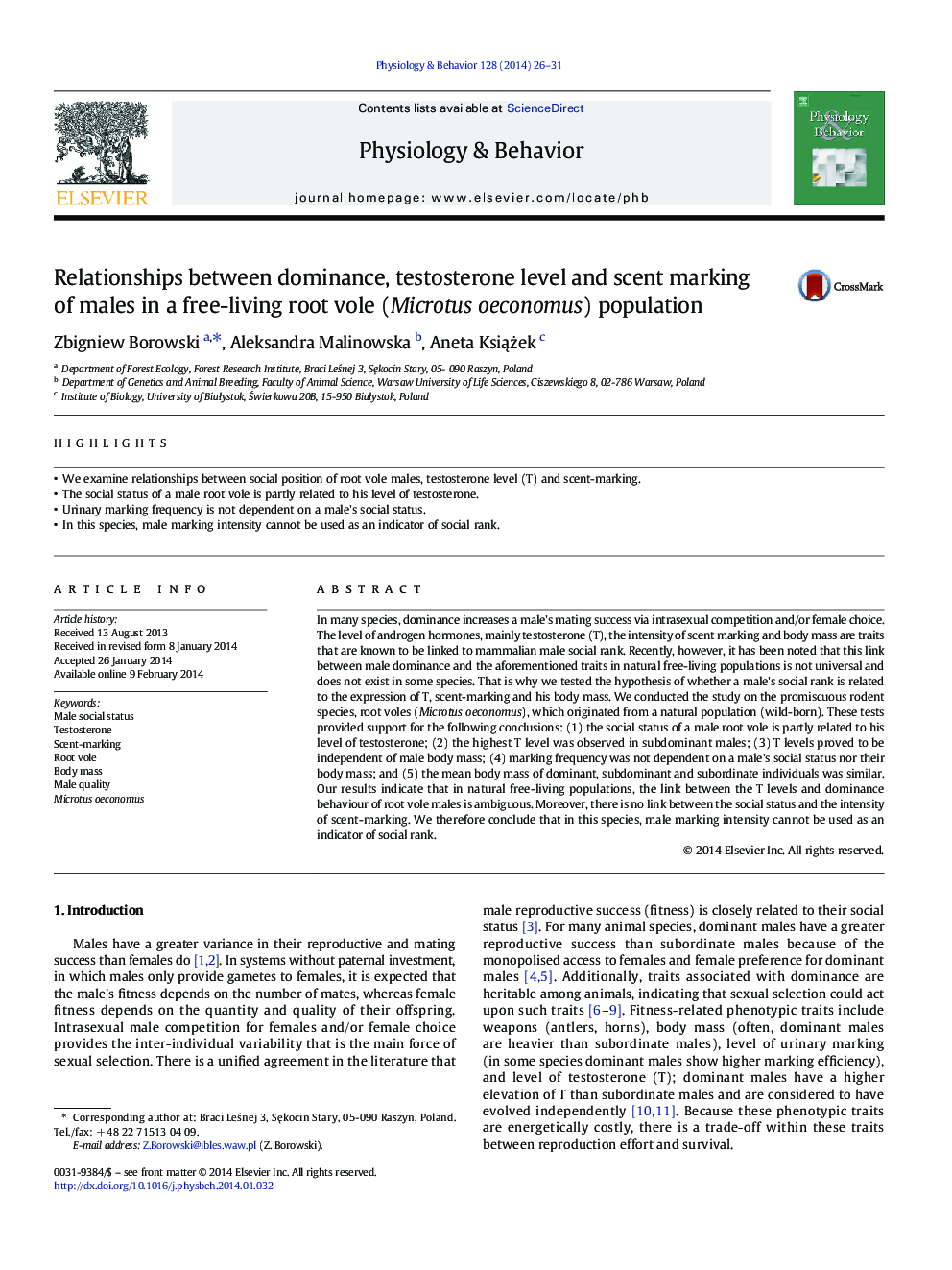| کد مقاله | کد نشریه | سال انتشار | مقاله انگلیسی | نسخه تمام متن |
|---|---|---|---|---|
| 5924413 | 1571189 | 2014 | 6 صفحه PDF | دانلود رایگان |
عنوان انگلیسی مقاله ISI
Relationships between dominance, testosterone level and scent marking of males in a free-living root vole (Microtus oeconomus) population
دانلود مقاله + سفارش ترجمه
دانلود مقاله ISI انگلیسی
رایگان برای ایرانیان
کلمات کلیدی
موضوعات مرتبط
علوم زیستی و بیوفناوری
بیوشیمی، ژنتیک و زیست شناسی مولکولی
فیزیولوژی
پیش نمایش صفحه اول مقاله

چکیده انگلیسی
In many species, dominance increases a male's mating success via intrasexual competition and/or female choice. The level of androgen hormones, mainly testosterone (T), the intensity of scent marking and body mass are traits that are known to be linked to mammalian male social rank. Recently, however, it has been noted that this link between male dominance and the aforementioned traits in natural free-living populations is not universal and does not exist in some species. That is why we tested the hypothesis of whether a male's social rank is related to the expression of T, scent-marking and his body mass. We conducted the study on the promiscuous rodent species, root voles (Microtus oeconomus), which originated from a natural population (wild-born). These tests provided support for the following conclusions: (1) the social status of a male root vole is partly related to his level of testosterone; (2) the highest T level was observed in subdominant males; (3) T levels proved to be independent of male body mass; (4) marking frequency was not dependent on a male's social status nor their body mass; and (5) the mean body mass of dominant, subdominant and subordinate individuals was similar. Our results indicate that in natural free-living populations, the link between the T levels and dominance behaviour of root vole males is ambiguous. Moreover, there is no link between the social status and the intensity of scent-marking. We therefore conclude that in this species, male marking intensity cannot be used as an indicator of social rank.
ناشر
Database: Elsevier - ScienceDirect (ساینس دایرکت)
Journal: Physiology & Behavior - Volume 128, 10 April 2014, Pages 26-31
Journal: Physiology & Behavior - Volume 128, 10 April 2014, Pages 26-31
نویسندگان
Zbigniew Borowski, Aleksandra Malinowska, Aneta KsiÄ
żek,